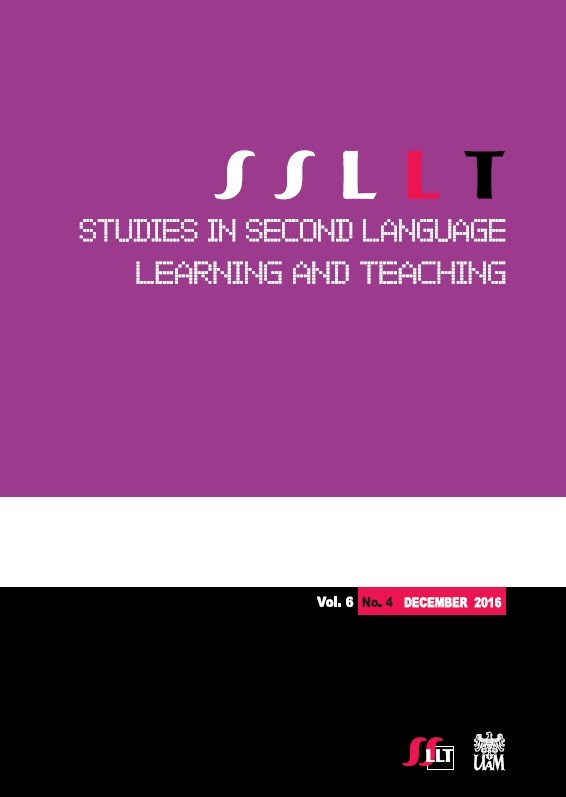Variations in developmental patterns across pragmatic features
Variations in developmental patterns across pragmatic features
Author(s): Qiong LiSubject(s): Language and Literature Studies, Foreign languages learning
Published by: Uniwersytet Adama Mickiewicza
Keywords: L2 pragmatic development; variations; longitudinal perspective; non-linearity
Summary/Abstract: Drawing on the findings of longitudinal studies in uninstructed contexts over the last two decades, this synthesis explores variations in developmental patterns across second language (L2) pragmatic features. Two synthesis questions were addressed:(a) What are the variations in developmental patterns across pragmatic features?, and (b) What are the potential explanations for the variations? In response to the first question, previous studies showed that L2 pragmatic development is a non-linear, dynamic process, with developmental paces varying across pragmatic features (Ortactepe, 2013; Taguchi, 2010, 2011, 2012; Warga & Scholmberger, 2007). These studies revealed that some aspects of pragmatic features(e.g., semantic strategies of speech acts) develop faster than others (e.g.,lexical features such as mitigators). In response to the second question, three potential explanations were identified to account for the developmental variations:(a) language-related, (b) situation-dependent, and (c) learner-related explanations,with three subcategories for the language-related explanation: (a) the functions of pragmatic features, (b) the frequency of availability of target features, and (c) the similarity and difference between languages with respect to the target feature.
Journal: Studies in Second Language Learning and Teaching
- Issue Year: VI/2016
- Issue No: 4
- Page Range: 587-617
- Page Count: 31
- Language: English

